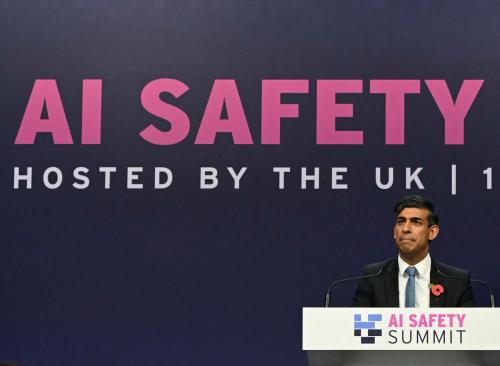As we mark the third anniversary of Japan’s Triple Disaster, questions still linger as to what Japan and the world have learned from the earthquake, tsunami, and nuclear accident that hit Japan on March 11, 2011 killing close to 20,000 people, tearing apart the Tohoku region, and displacing for the long-term close to 270,000 persons, who till this day remain in temporary housing.
Some of the lessons learned were discussed by a panel of experts who gathered at Brookings last May to identify lessons in Japan’s experience for disaster prevention and mitigation. The lessons these experts drew from Japan’s Triple Disaster are indeed far-ranging: from the inclusion of infrequent but worst case scenarios for earthquakes and tsunamis in national planning, the benefits of proactively integrating NGOs into disaster response strategies (Randy Martin, panel 1), the need to make contingency plans in case local governments are decimated and relief requests have to be coordinated at other levels of the administrative structure, and the sheer efficiency of low-tech solutions such as sirens in tsunami warning systems. One of the most telling lessons was that national response strategies are frequently designed to respond to the previous mega disaster and so may be ill-equipped to deal with new challenges. For example, the challenge for medical teams during the Kobe earthquake was to deal with the vast number of trauma injuries, but the 3/11 earthquake required a very different response when most of the victims died in the immediate aftermath from the tsunami and a difficult determination was required about whether to send medical teams to areas affected by radiation from the Fukushima nuclear plant.
The Triple Disaster also confirmed the need for governments in developed as well as developing countries to consider the extent to which their laws and policies are prepared for disasters. For example, in Japan’s Triple Disaster, as well as Hurricane Katrina in the U.S. and the 2011 Christchurch earthquake in New Zealand, governments were not prepared to deal with the influx of offers of foreign assistance. International disaster response law is a way to ensure that international relief can flow quickly – and appropriately – when disasters occur.
The international humanitarian community was reminded by Japan’s Triple Disaster that children are not the only vulnerable group in disasters and that the elderly have particular needs which should be addressed. Evacuating people from areas which are unsafe is always a difficult undertaking but the deliberate efforts to keep communities together in evacuations after the 3/11 Triple Disaster undoubtedly minimized some of the social dislocation which often occurs. Another lesson from 3/11 is that providing accurate information can be as important as aid delivery. While by all accounts, Japan’s immediate relief efforts to the earthquake and tsunami were impressive in both scope and speed, its response was sadly lacking when it came to providing reliable and timely information about the damaged Fukushima reactors.
In fact, the most poignant lesson in Japan’s case relates to Fukushima – not to the devastation of either the earthquake or the tsunami. For humanitarian actors working in other countries, there is a clear lesson to pay attention to the prospects for nuclear/industrial/technological accidents triggered by natural hazards. Few relief agencies are prepared for (or even thinking about) such scenarios. And for Japan, the lesson is still undrawn: what will be the future of nuclear energy? The cleanup at Fukushima still leaves much to be desired, the new Nuclear Regulation Authority has issued tougher safety guidelines, but the deadlines to complete reactor checks have been missed, and the government has not yet answered the most fundamental question in the minds of most citizens: what will be the role of nuclear power in the country’s energy mix? This will be a defining lesson for Japan and the world.



Commentary
Lessons from Japan’s Triple Disaster: Three Years On
March 10, 2014